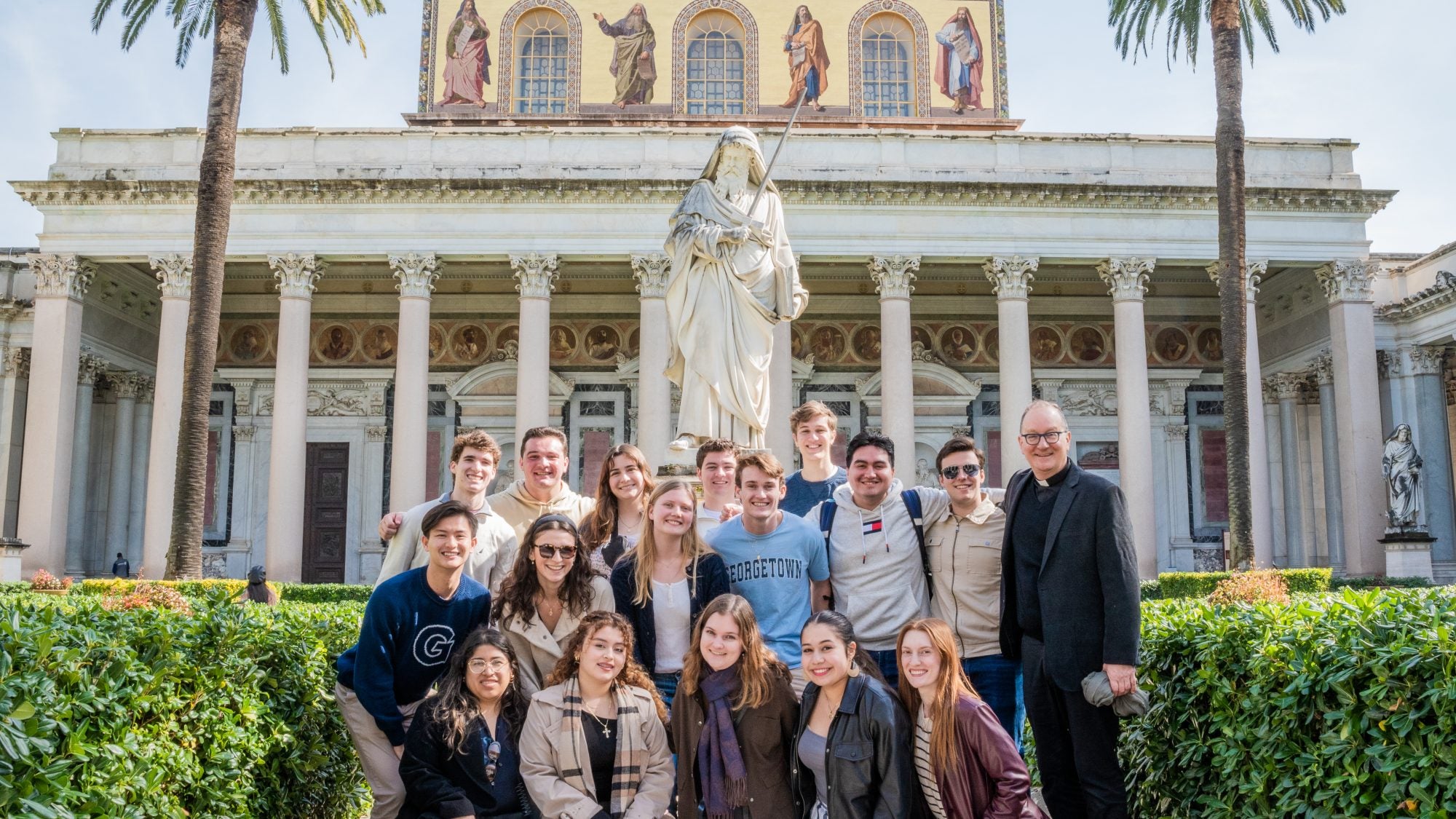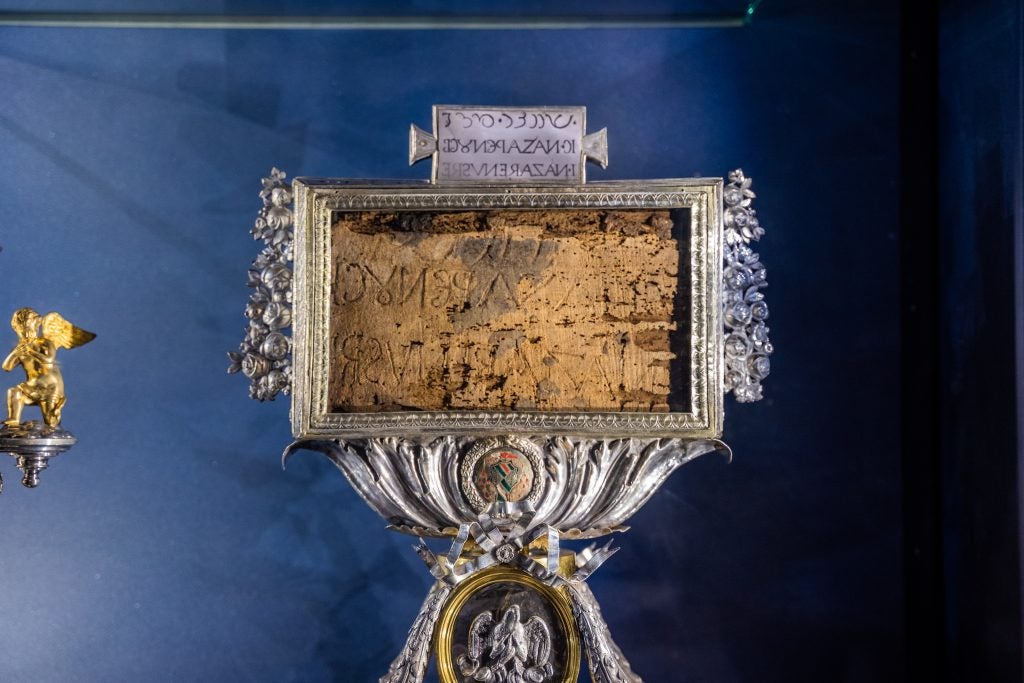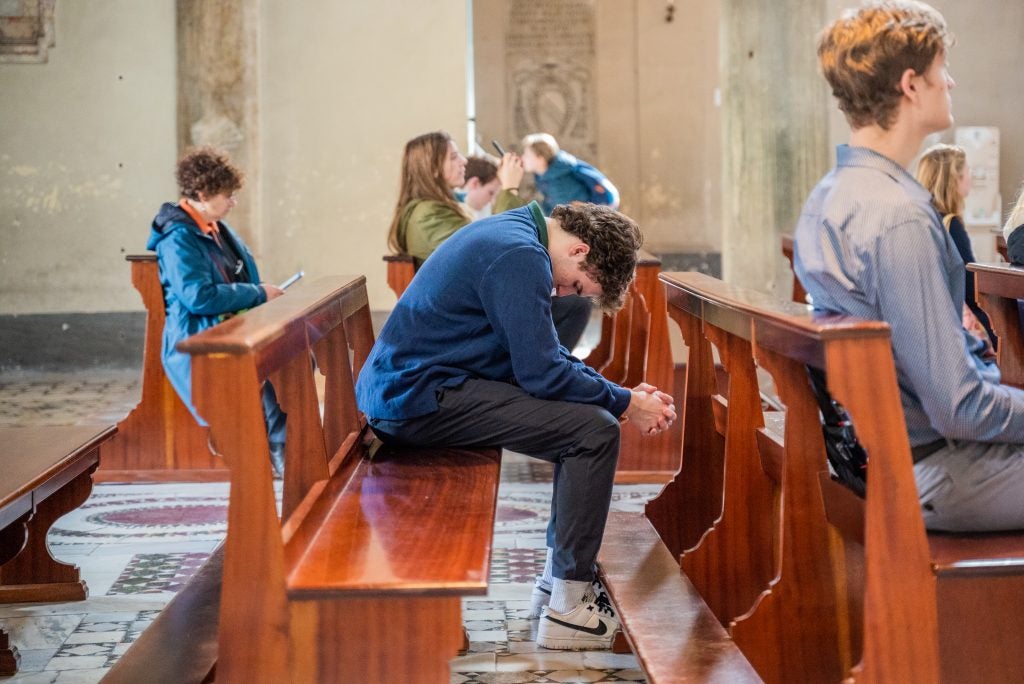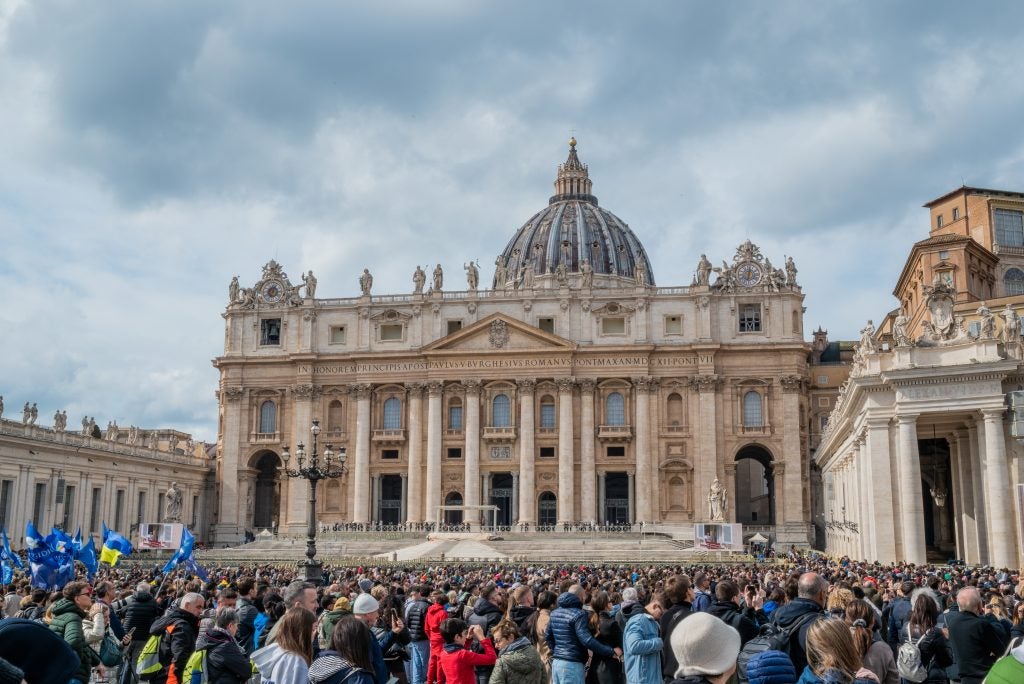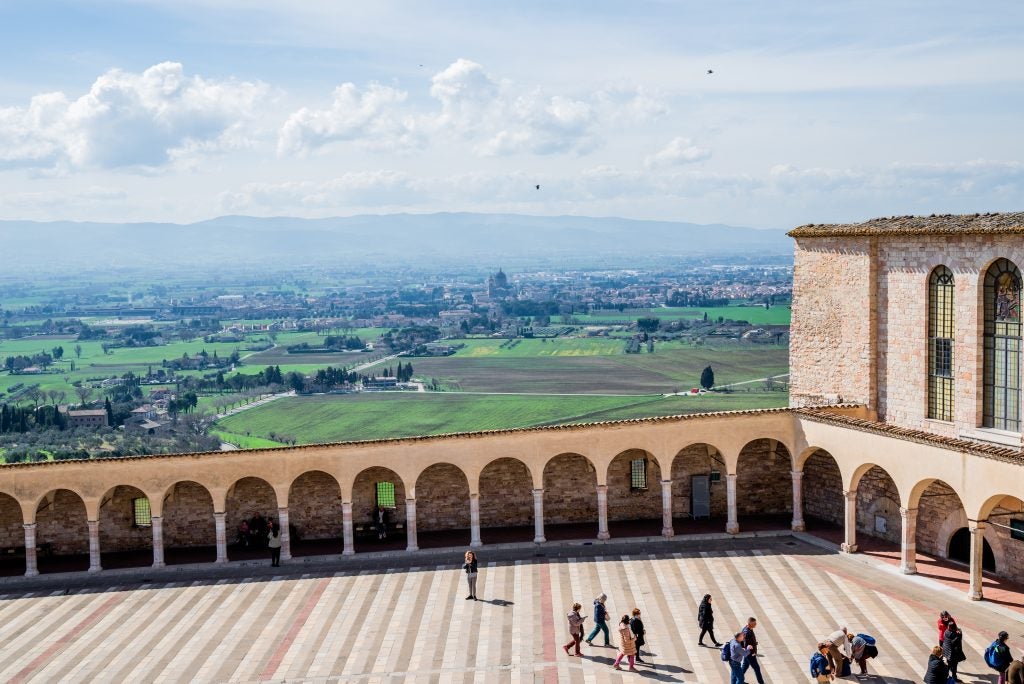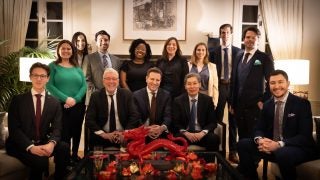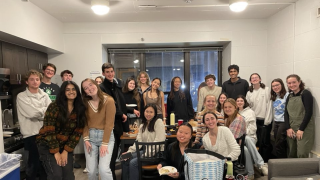Amman and Rome — what do these places have in common? Over spring break Renato Llontop Calosi (SFS’24) traveled to Jordan, and Bennie Chang (SFS’26) ventured to Italy to learn more about the role religion plays through the lens of local customs and traditions.
As part of the MAGIS Immersion Seminars (MIS) put on by the Office of Mission & Ministry and in collaboration with the Department of Theology & Religious Studies, students spend six weeks learning in the classroom, followed by one week of on-the-ground experiential learning. After returning from their spring break immersion experience, they complete an independent study project — overseen by their course instructor — to complete the course.
Follow along with Bennie and Renato as they reflect on their experiences in their seminars traveling to sacred places across the world over spring break.
Faith at Crossroads: Religious Encounter in Jordan
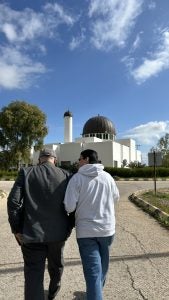
As it’s my last semester as a student, I wanted to dive deeper into how faith overlaps in many different sectors of society. At first, Faith at Crossroads may seem to be quite a broad definition for a class, but over the past weeks, I understood more about why Jordan plays such an important role in bringing people of all faiths into dialogue and coexistence.
While in Jordan, I didn’t expect to find places so similar to my hometown in Lima, Peru, particularly walking through the different layers of society. Yet, it was remarkable to see how faith moves people’s day-to-day lives in very authentic ways, regardless of their nationality, ethnicity or social class.
During our days in Amman, we had the opportunity to meet with high-level officials and religious leaders. At the Royal Institute of Inter-Faith Studies, Prince Hassan bin Talal — a member of the Jordanian royal family and the former crown prince — elaborated on the uniqueness of the Jordanian religious model through the “Amman Message” and “A Common Word between Us and You” initiatives before opening the floor to our questions and comments.
His insights allowed me to understand how Jordanian foreign policy preaches religion as an important element in diplomacy. We also had the chance to talk with Hosam Naoum — the Anglican Archbishop for the Holy Land — as well as Fr. Majdi, S.J., at the Jesuit Relief Services and visit important Muslim sites such as King Abdullah I Mosque. And we engaged in dialogue with students from the University of Jordan and Al al-Bayt University, where we learned how faith is approached in the education system of the country. These moments allowed me to gain a perspective on how religion is lived in Jordanian society and how religious organizations can aid those in need.
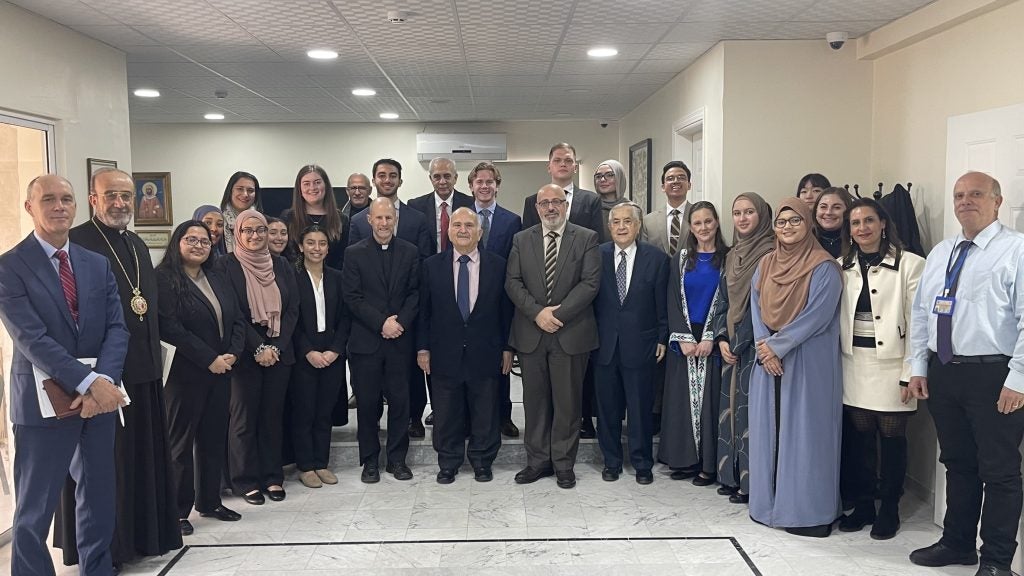
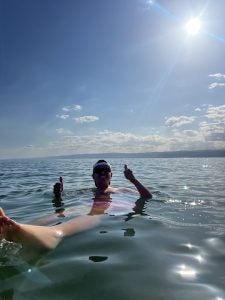
During our trip, we also explored how Jordan has been a haven throughout history for refugees across the Middle East, particularly those of Palestinian, Syrian and Iraqi origin. We visited a UNRWA — United Nations Relief and Works Agency for Palestine Refugees in the Near East — school and spoke with students in their last year of high school. Among all, one thing resonated: No matter their background, everybody has a motivation in life and the students shared theirs with us. We also met many refugee families during our ground-level immersion in the Marka camp with Manal Wazani from Durrat al-Manal, which is an NGO devoted to developing and building the capacity of individuals, organizations and communities through the implementation of development and humanitarian programs. It was heartwarming to see that even though we were so close to a conflict zone, people found ways to empower themselves without losing hope.
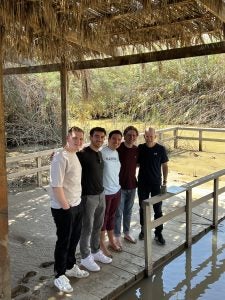
On a more personal level, I was able to renew my baptismal promises at the Jordan River as Fr. Matthew Carnes, S.J., conducted the prayer. I enjoyed learning about Jordanian history through visits to the Citadel and the ruins in Petra, and I had a good time floating in the Dead Sea with my fellow Hoyas.
This exposure to different realities allowed me to come back home fully recharged with a message of hope and sincerity. Faith is not a dogmatic or theological issue. The coexistence of faiths is grounded in a living experience, and it is exposure to this reality that will allow individuals to understand that one cannot live without the other. Thank you, Jordan, for the kindness of your people and for providing refuge to all those in need.
Theology of Pilgrimage: Rome
Taught by Fr. Mark Bosco, S.J., the class explores the importance of Rome as a pilgrimage sight for Catholics. The course first delves into pilgrimage across different faith and non-faith traditions before exploring the significance of pilgrimage to Rome for Catholics. As the center of Christianity for centuries, Rome is the final resting place for many saints, many of whose preserved remains and possessions are known as relics. Catholics believe in the miraculous nature of relics and the importance of pilgrimage to an individual’s spiritual and religious development.
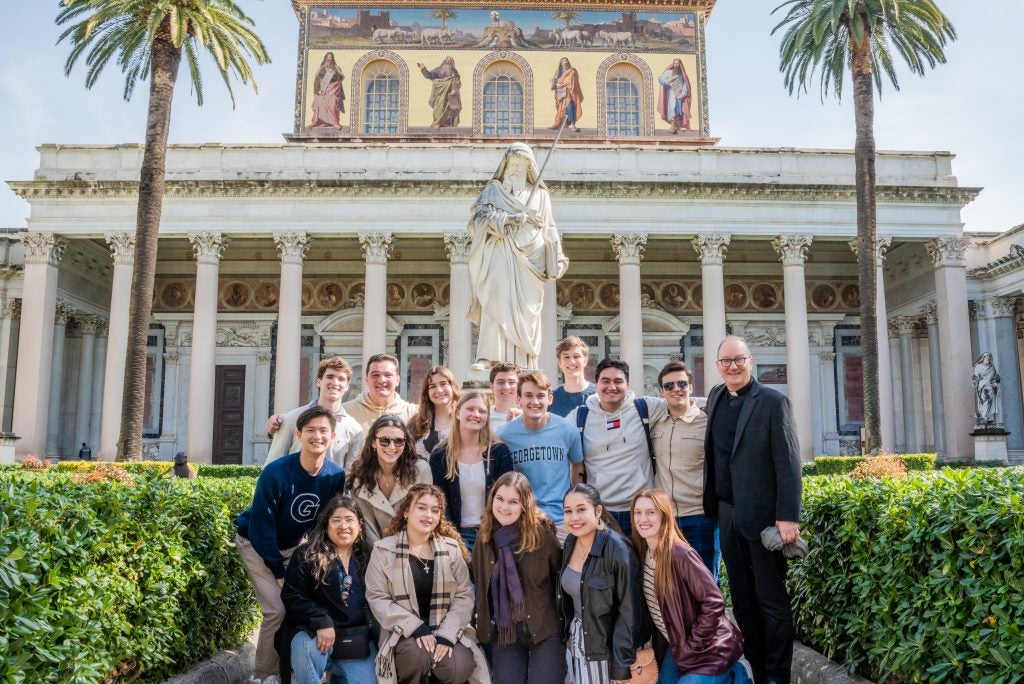
During spring break, we visited the sites that housed these relics, paying homage to churches of historical and present-day significance. A few that we went to include St. Peter’s Basilica, Basilica of St. Paul Outside the Walls, Basilica of the Holy Cross in Jerusalem, Sant’Agnese in Agone, Il Gesu and the Basilica of St. Francis of Assisi. My favorite church was the Basilica of the Holy Cross in Jerusalem, one of the Seven Pilgrim Churches of Rome. At the church, I saw the cross, nail, thorn and title panel from Christ’s crucifixion, which St. Helena, mother of Roman Emperor Constantine I, brought to Rome from Jerusalem in the fourth century. It was an incredible sight and particularly awe-inspiring.
